Is it best to grow vegetables in raised boxes? Best for the vegetables? Best for you?
Even though I grow my vegetables in the ground in my current garden, growing in raised boxes might be right for you. I’ll go through the pros and cons of growing vegetables in raised boxes, mostly in comparison to growing in the ground, with the hope that it will help you choose the best setup for your situation.
RAISED BOXES: pros
Most of the advantages of raised boxes are related to being in total control of the medium in which your vegetables will grow, plus more easily preventing damage from certain pests.
Boxes can be filled with an awesome growing medium. You can buy a rich mix that has fast drainage in which any vegetable will grow to its full potential. So it doesn’t matter what the dirt in your yard is like — slow draining, shallow, low fertility, heavy clay, super sandy, doesn’t matter. You get to create the optimum environment for your plants’ roots.
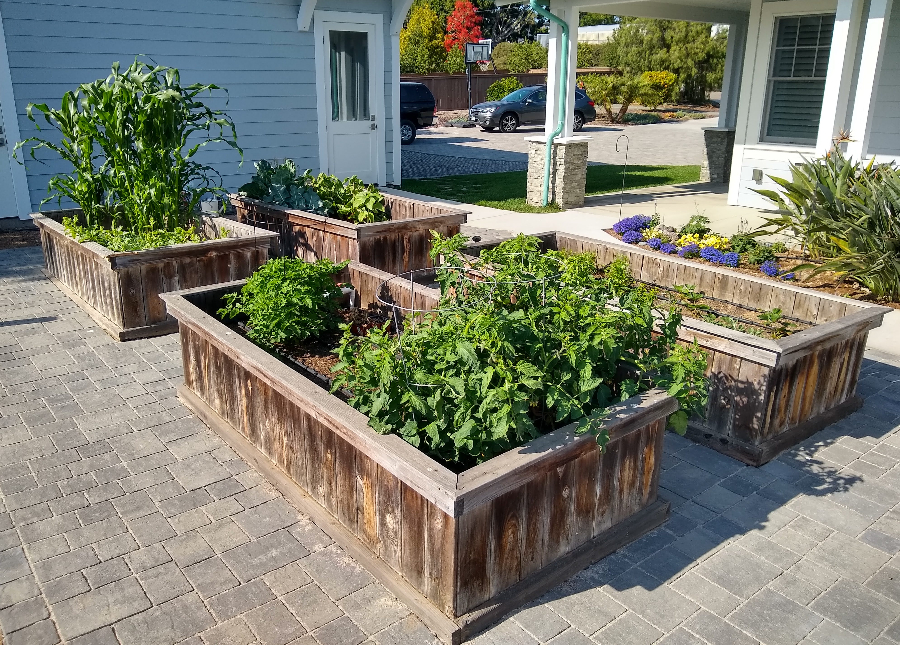
The mix should also not contain any micro-organisms that cause diseases in vegetables, such as root-knot nematodes or verticillium wilt fungi. That’s a big advantage.
There should be no weed seeds in the raised-box mix either. Brick paths, as shown above, and gravel paths, as shown below, around the boxes can further reduce the introduction of weed seeds.
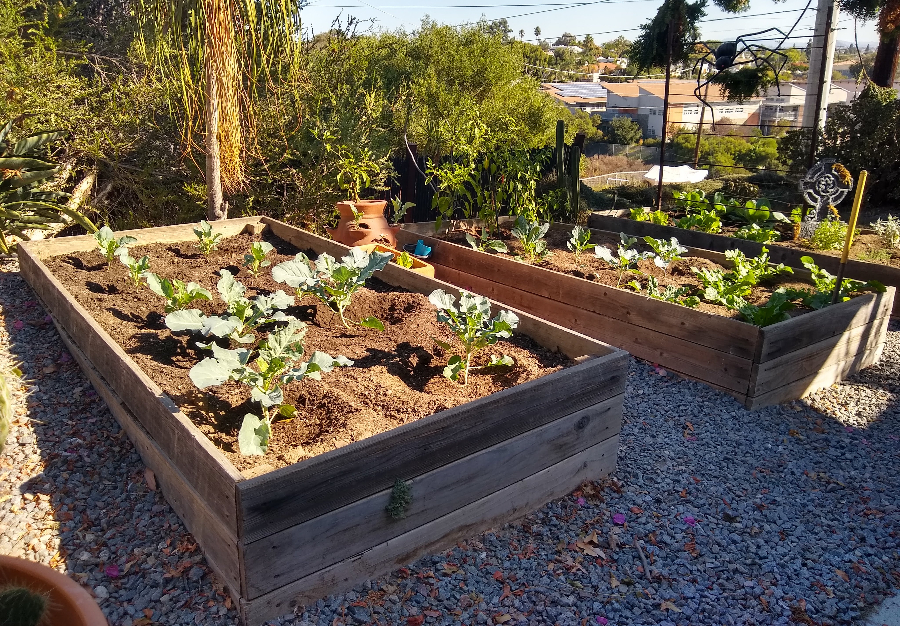
If the boxes are high enough, they can make gardening activities easier on your back and knees.
Also if the boxes are high enough, rabbits cannot get to the vegetables. Two feet up is high enough for that.
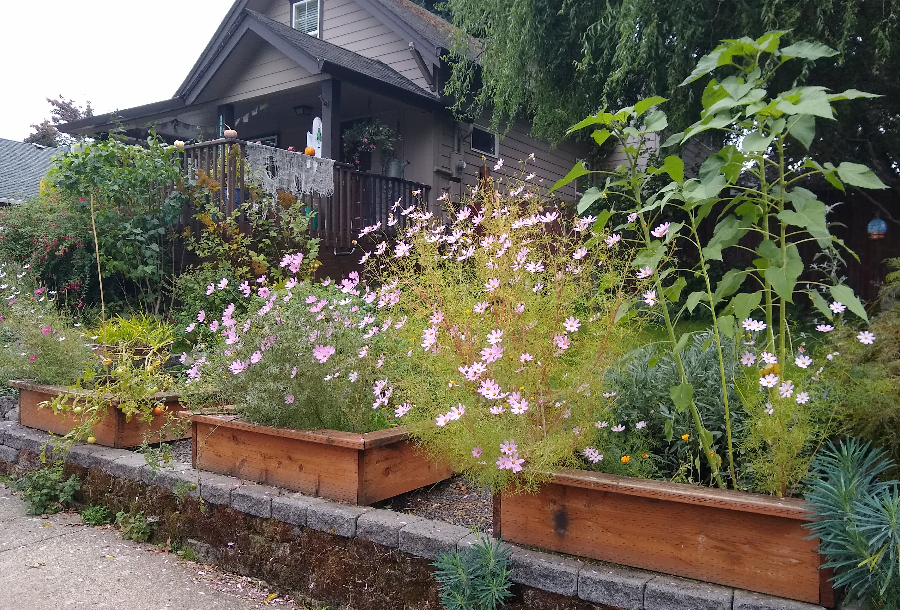
To prevent gophers from entering, you can line the bottom of a box with hardware cloth. You can also raise the box off the ground.
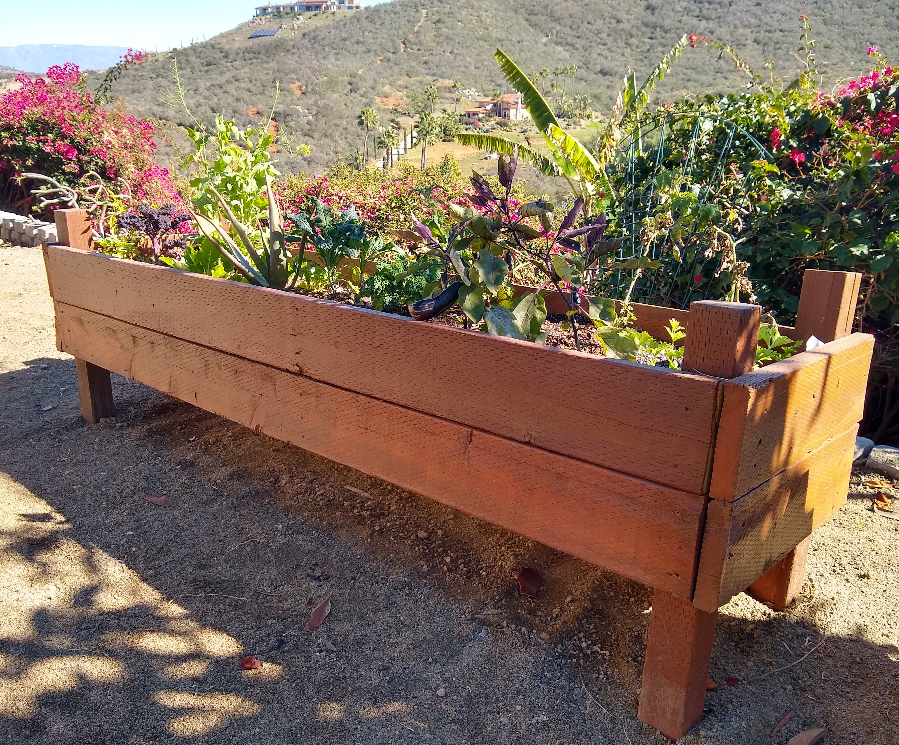
You can incorporate structures for plant support or protection, such as shade covers, nets, and trellises.
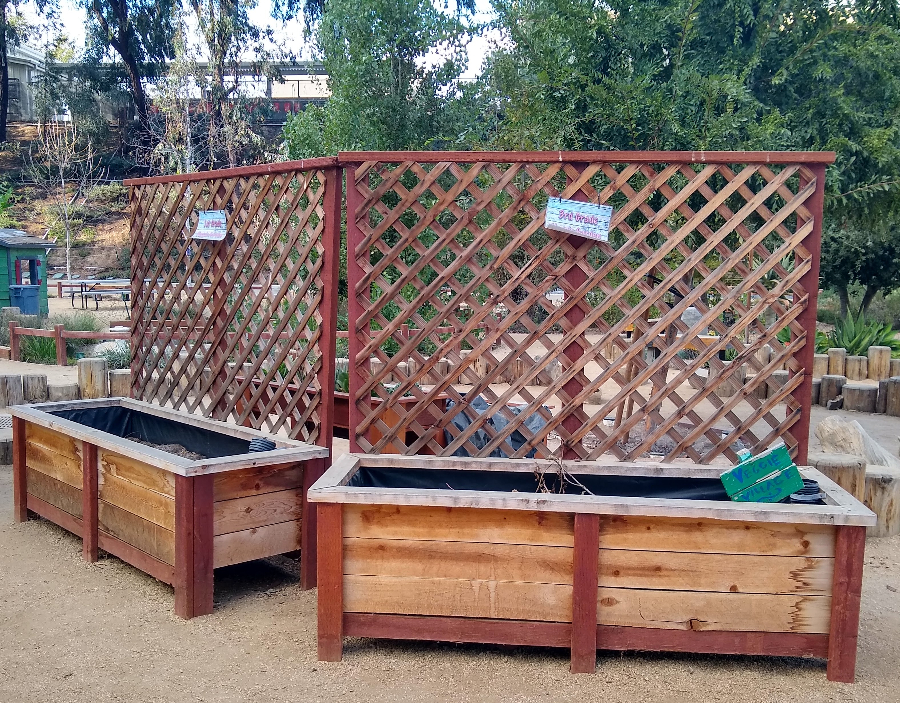
MY VEGETABLES: in the ground
Even if I haven’t convinced you yet, I have just convinced myself that growing vegetables in raised boxes sounds ideal. Listen to all of those advantages! Raised boxes solve so many problems. Then why do I grow my vegetables in the ground?

My yard has ideal soil. It is a sandy loam with excellent drainage. When we were house shopping, my wife went inside to look at the kitchens and bedrooms while I walked the land and grabbed handfuls of dirt. All I cared about was how well the property could grow food. Raised boxes offer fewer advantages if you are standing on good dirt.
Moreover, my yard is sloped, and it takes extra work to build boxes when there’s much slope.
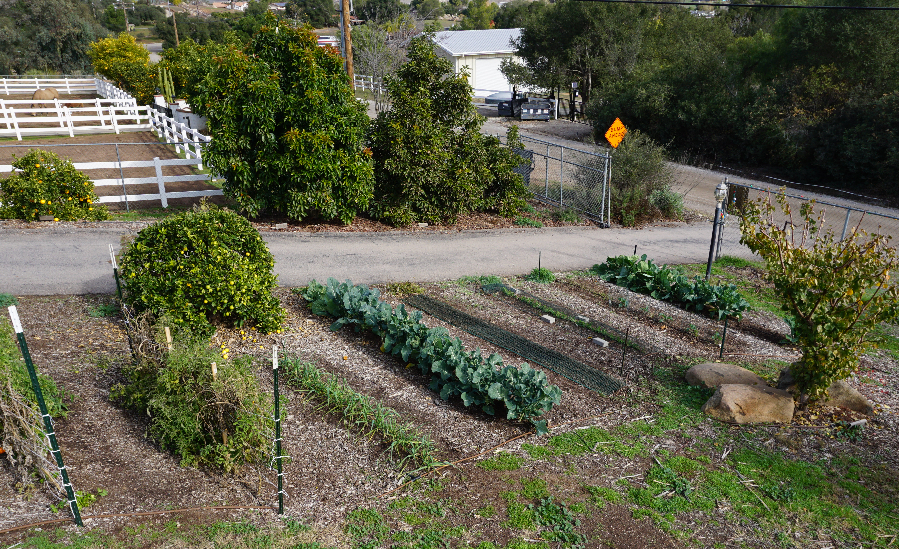
I also wanted our young children to have total access to the vegetables. Boxes raised high enough to prevent rabbit damage are too high for a two year old to reach in and harvest carrots. You can’t have it both ways. I chose access for the kids as the priority. This is also why I’ve never put fencing around our vegetable area.

RAISED BOXES: cons
Those are a few of the reasons I chose to grow my vegetables right in the native soil rather than build boxes. Here are a few other negatives about using raised boxes, most of which have to do with the initial costs and labor involved in creating them.
You must buy the boxes and install them or buy the materials to create the boxes (wood, concrete, metal, whatever).
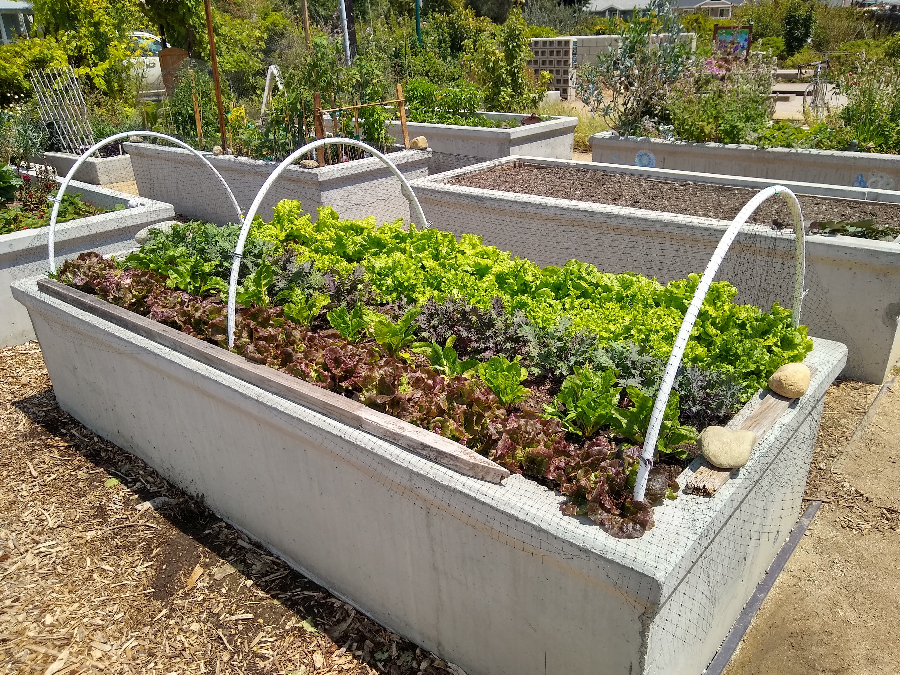
You must buy a mix to fill the boxes unless you have good native soil that you can excavate.
Raised boxes need to be maintained, especially those built with wood. They eventually bulge, warp, and rot. I’ve seen the hardware cloth preventing gophers sometimes fail and need patching.
Raised boxes require more frequent watering. This is because they’re always filled with mixes that drain faster than actual dirt. The necessity of frequent watering can be a challenge if you live inland where summers are hot.
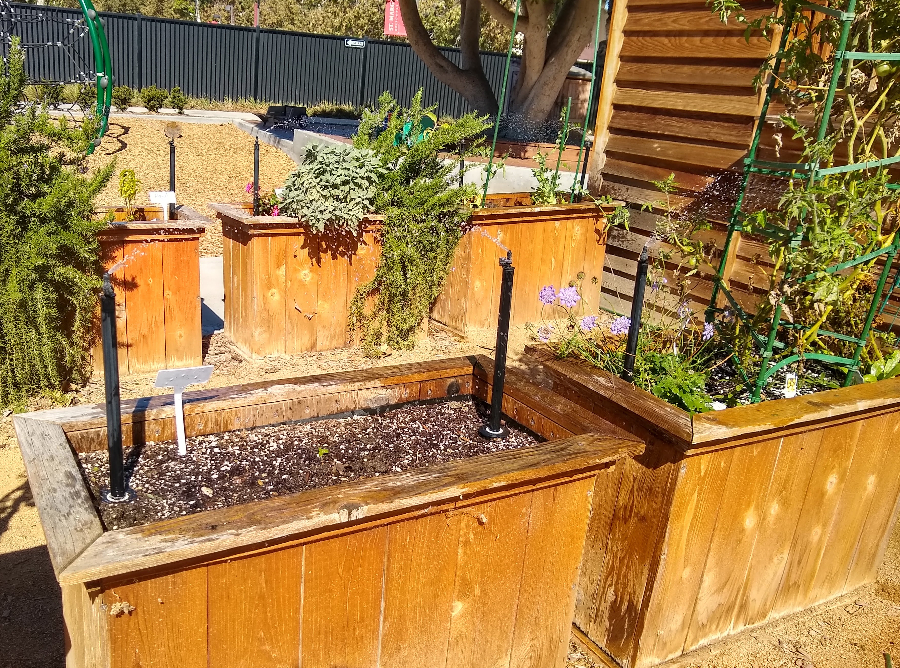
I grow my vegetables right in the ground mostly because my soil is good, my yard is sloped, and I want my kids to have easy access to all the food.
However, if my yard were fairly flat and my soil was not good in some way (shallow, very rocky, very clayey, slow draining), or if it gave my body trouble to tend to a garden at ground level, then I would definitely build raised boxes in which to grow my vegetables. Raised boxes offer lots of benefits that can make them worth their cost.
Good mixes for raised boxes
I’ve seen many different mixes work well in raised boxes so there certainly isn’t one recipe that everyone should use. Some nurseries and garden centers sell bulk mixes for garden boxes that are cheaper and work very well so if you have a place like that near you, try what they offer.
Otherwise, you can purchase bags of mixes. In my experience, the best mixes that you can buy in bags are:
EB Stone’s Recipe 420 and G&B’s Blue Ribbon Blend.
I would also consider mixing in some “topsoil,” which is usually a sandy loam type of dirt, or even some other kind of real dirt. This is because the dirt adds minerals and gives the mix more density and better water-holding capacity. A topsoil blend that you can buy in bags that I’ve used is EB Stone’s Topsoil Plus.
(The art at the top of the page was created by my eight-year-old son, Cass.)
All of my Yard Posts are listed HERE
If it weren’t for your generous support, I would have to fill this page with ads in order to pay the bills. Yikes! Thank you for allowing me not to do that.

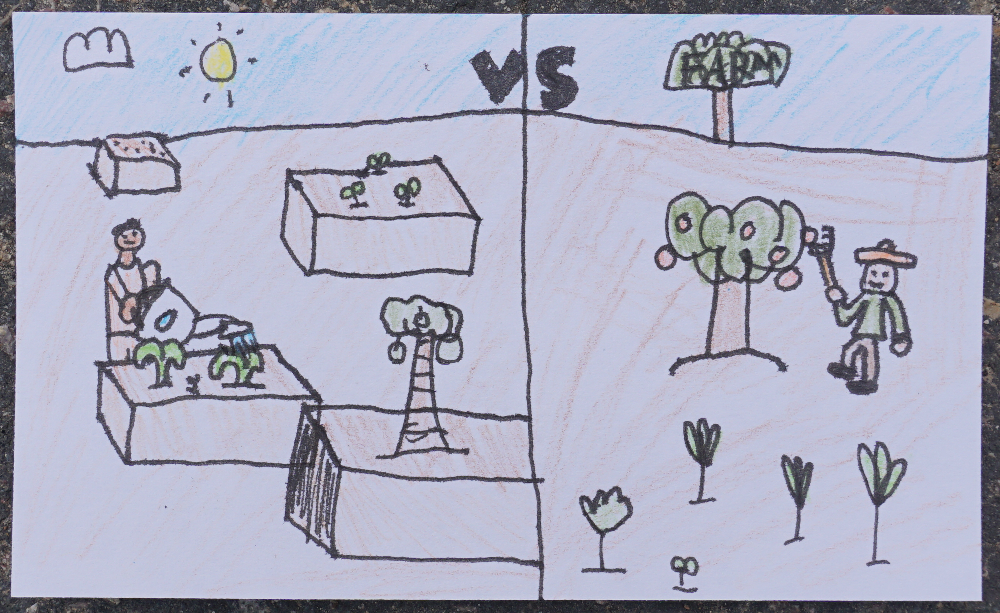


The question at the beginning was, “What vegetables are you eating from your garden now?” I am surprised by my Celebrity Tomatoes recovering and still producing in mid December, 2022. We’ve had about a dozen ripe so far this month and there are about 2 dozen still green and growing. This is in Yorba Linda at the West end of the Canyon.
That’s super interesting David. I also have 2 celebrity tomatoes that are producing – though I mostly took the other varieties out since they were looking really done. I am debating taking the celebrities out as well now since they seem to be doing fine until they start to ripen a bit and then split from the top. (I’m in Irvine btw, so close to you). Sweet Carneros Pink tomato from Wild Boar Farms also produced really late (and well), as did our Blueberry tomatoes. Finally, I have a new girl tomato still in the ground and that also has about 10-15 big green tomatoes on it. I took out a different New Girl plant and a Better Boy plant a few weeks ago and harvested about 20 green tomatoes from those 2 as well.
Good luck with your winter gardening!
David and MB,
I’m a bit jealous of you guys. My place has been too chilly the past month to ripen any big tomatoes properly. I still have some in the ground and they have lots of green fruit on them, but they take forever to turn color and they don’t taste good when they do. At least my smaller tomatoes like Sungold and Sakura are still ripening acceptably. But I expect them to be wiped out by a frost within the next month.
We are eating lettuce. My carrots all germinated but not really growing. I moved recently and am still settting up the new garden. One garden box is filled with a blend of Dr. earth and one has an EB Stone blend I make. The EB is performing much better. I have lettuce and Brussels that I split between the boxes and one box is thriving. The other is not doing nearly as well. What do you use for a raised bed mix?
Thanks for that report, Dan! Can you share any details about the EB Stone blend that is working well?
I thought about including some info on mixes for raised boxes but figured it was a bit off topic. I see that I was wrong.
I’ve seen many different mixes work well in raised boxes so there certainly isn’t one recipe that everyone should use. Some nurseries and garden centers sell bulk mixes for garden boxes that are cheaper and work very well so if you have a place like that near you, I would try it.
Otherwise, you can purchase bags. In my experience, the best mixes that you can buy in bags are:
EB Stone’s Recipe 420: https://www.recipe420.com/products/
and G&B’s Blue Ribbon Blend: https://kellogggarden.com/products/gborganics/gb-organics-blue-ribbon-potting-soil/
I would also consider mixing in some “topsoil,” which is usually a sandy loam type of dirt, or even some other kind of real dirt. This is because the dirt adds minerals and gives the mix more density and better water-holding capacity. A topsoil blend that you can buy in bags that I’ve used is EB Stone’s Topsoil Plus: https://www.ebstone.org/product/top-soil-plus/
Usually mix two bags topsoil, two blocks planting mix, one bag chicken manure, one bag potting soil. I try to do about 30% top soil, 40% compost and 30% potting soil.
can I please get some soil recommendations for raised box gardens. Thanks!
Hi Dean,
See my answer to Dan above. I also added the info to the bottom of the post.
Thanks!!
Greg – Your kids are adorable! I had ambitious plans for winter and seeded 12 of my garden boxes (3’x6′) and birds and pill bugs basically ate everything from seed to tiny growths. I was already exhausted from our summer season so gave myself a break though I really wanted all my Italian chicories. Guess there is next year. My arugula grew and has withstood the freezing temps in Sonoma for the last many weeks. And I did plant fava beans and they are growing despite the fluctuating temps (low 30’s in the morning – 50+ daytime high). Happy Holidays!
I haven’t yet started filling my raised beds. My question is about using my own compost. I have 30 chickens and started composting their waste in compost bins a while ago. I’m accumulating the compost for my garden raised beds. The compost was made from mostly chicken waste including some pine shavings, along with vegetable left overs from produce I get for the chickens, and a little bit of dried leaves and bougainvillea petals. I also added a little granular zeolite used for chicken bedding. I would like advice on what to mix with this. I have a few kinds of soil available on my property and wonder if I should mix those in or buy something instead. I have some loose soil that appears to be a sandy clay mix as it is reddish. And I have some that is dark and rich looking, like it has broken down organic material in it. Thank you for any advice!
Hi Lisa,
I’m not going to give you a recipe since I can’t see and feel your compost and soil, but I’ll say that I grow many of my vegetables in containers of my homemade compost without adding anything. My homemade compost is made with wood chips from tree trimmmers, garden and kitchen waste, all thrown into my chicken pen so it also has ample chicken manure too. Sounds pretty similar to yours. I have found that mine works best at growing vegetables if I let it age for a couple months; I do this by letting it sit in five- or fifteen-gallon containers — this is after it already looks well composted inside the chicken pen.
I would mix in the soil that looks like it is growing plants best on your property. I wouldn’t go over about 70 percent soil (to 30 percent compost).
This is very helpful. Thank you so much!
no matter how much time i spend putting hardware cloth down, over time a gopher will find its way in. then what?
Hey Tom. You may want to check out the “Homestead and Chill” blog. They have a step by step tutorial on this and have been very successful at keeping the gophers out of their raised beds
Hi Tom,
Good question. It seems that no matter how well you attach the hardware cloth initially, it can fail to keep gophers out in the long run. This has been my observation of other people’s raised boxes, which is why I mentioned the “maintenance” issue above.
I wonder if anyone who has lots of gopher activity has ever attached hardware cloth so well that it has kept gophers out for a very long time — like a decade or more.
A friend of mine who lives in Elfin Forest was having a horrible time with gophers. He created a base for his raised beds by using chicken wire wrapped around baseball sized rocks stacked inside the chicken wire. This layer of rocks was about 1′ tall. Then on top of this he placed the hardware cloth and then the raised bed wooden structure to hold the soil.
Understandably he had EXCELLENT drainage.
I imagine you cold line the bottom of any raised bed with tight fitting rocks(large enough so a gopher could not move them) or bricks with a sufficient drainage gap. These would last forever and not rust or rot.
I’ve had raised beds for about 15 years, and I love them for all the reasons Greg mentioned. Unfortunately, our soil is decomposed granite so it’s not good for vegetables, but great for vinifera. I needed to raise the beds a bit higher than mentioned to keep out rabbits, and I’ve built PVC/hardware cloth fences on top which has eliminated them.
I’m convinced that with climate change there are parts of SoCal that are essentially the same environment as Mexico of 30 years ago, so I plant and harvest year round. Presently we’re harvesting three types of lettuce, arugula, and two spinaches. Broccoli and cauliflower should have heads within about 3-4 weeks and they did well last winter. Sugar snaps and peas should be harvesting in 2-3 weeks also. Over wintered eggplant, jalapenos, two types of peppers and they’re all doing well with new growth and starting to develop fruit. Started two types of cherry tomatoes, and just like last year, they’re doing really well at about 2 feet tall. Even tho we’ve had unusually cold nights, we haven’t had a freeze (just like last year).
I wouldn’t use bags of soil for raised beds unless they are 1/ pretty small, and 2/ you can fill the first several feet with soil from your yard. Mine are large — 4 X 8 and 4 X 10; total of 7 so I obtained garden mix from a local supplier that was really rich. They delivered and then I got all the fun of shoveling and wheelbarrow to beds. Almost as much good times as shoveling snow, but you only do it once every 3-4 years.